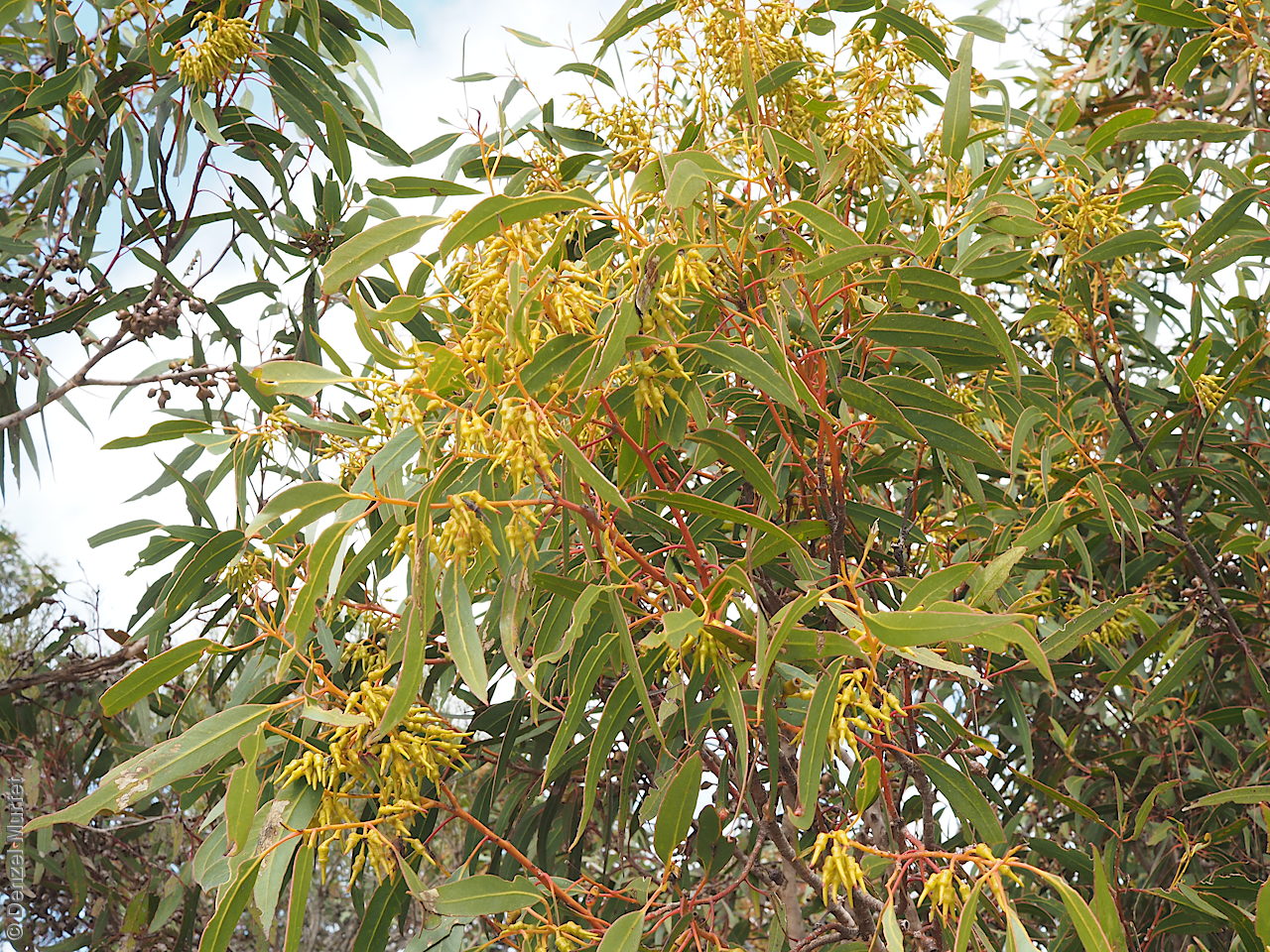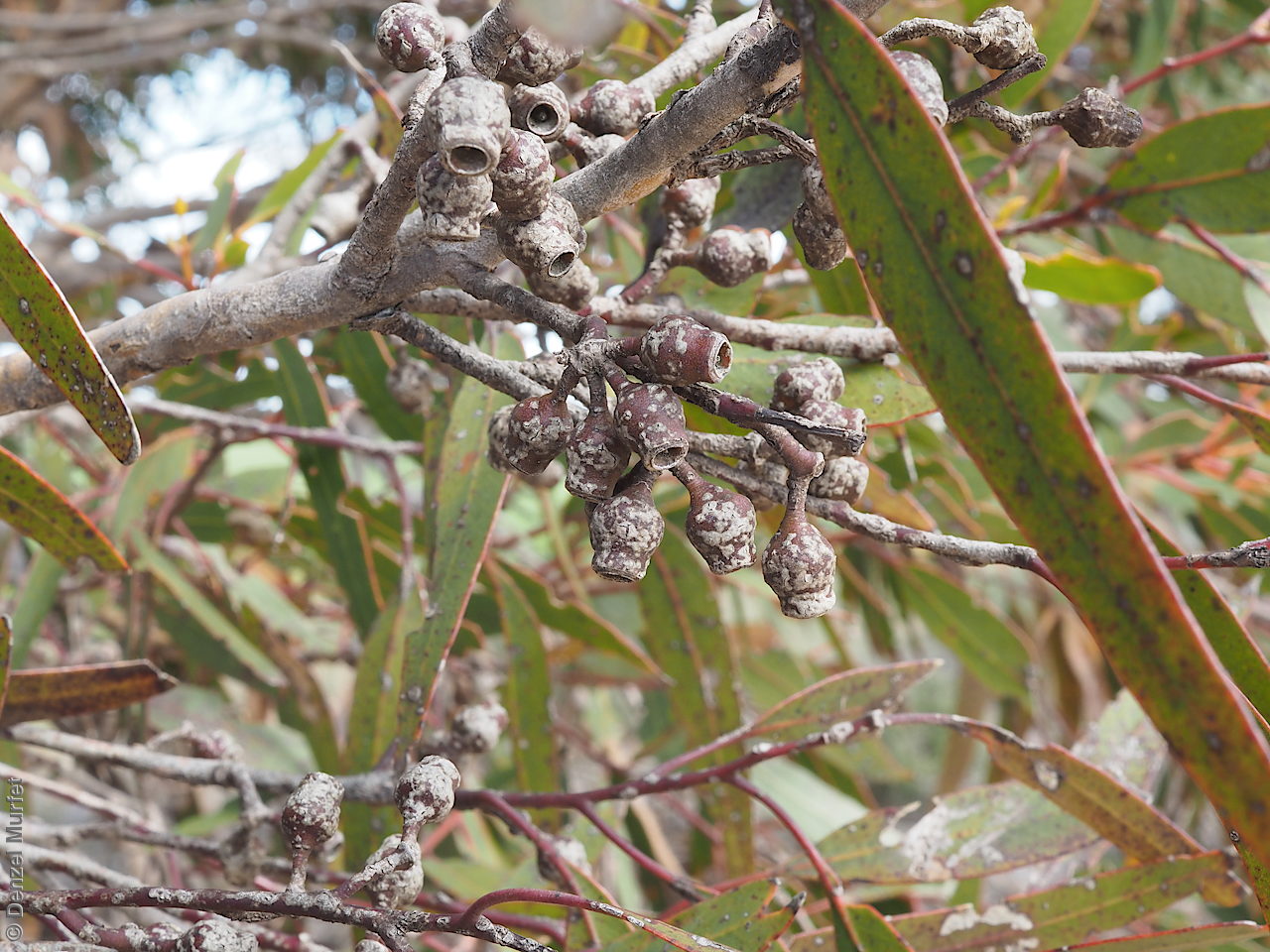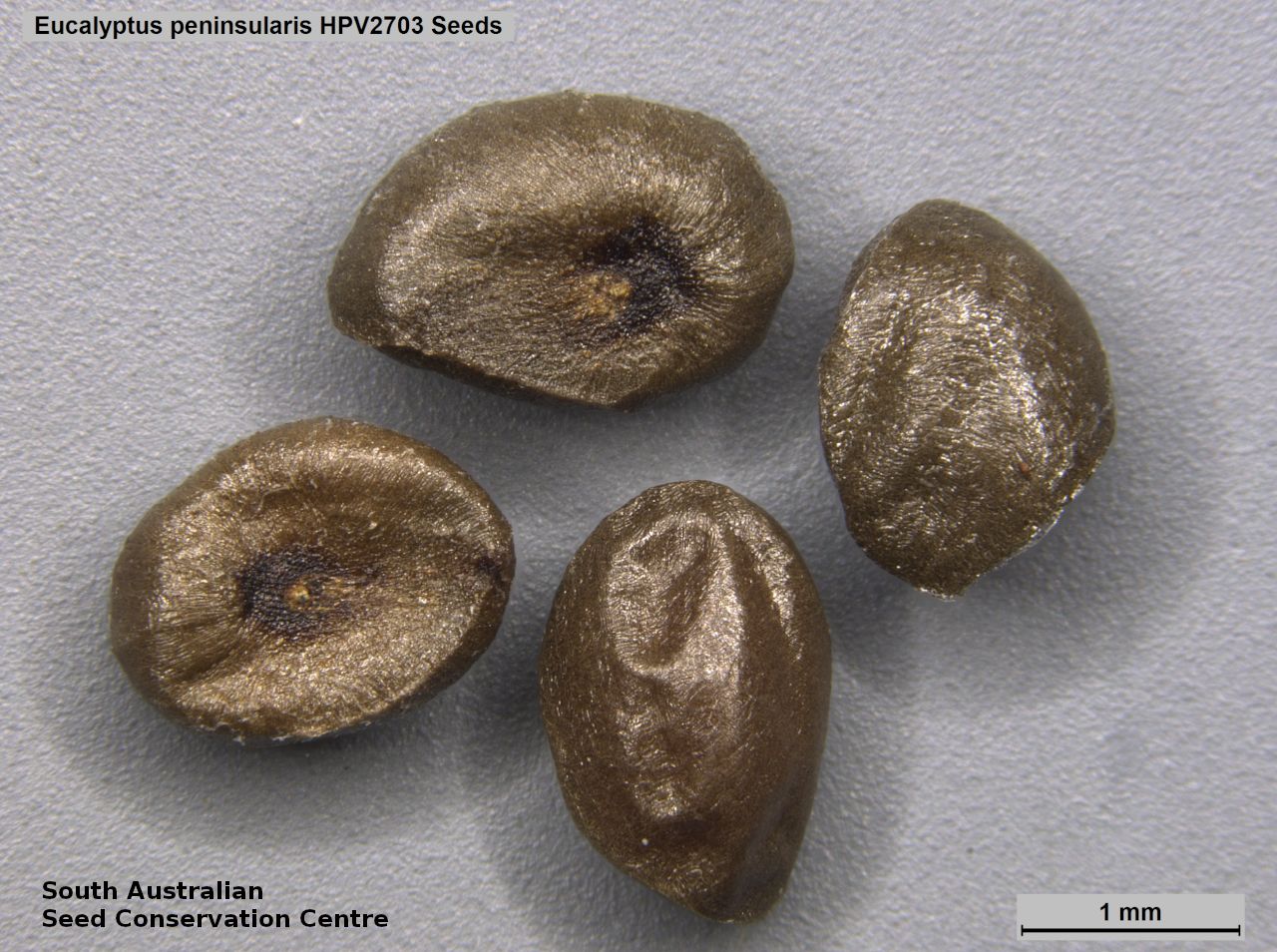

















Botanical art
Prior names
Eucalyptus flocktoniae
Common names
Cummins Mallee
Merrit
Etymology
Eucalyptus from the Greek 'eu' meaning well and 'calyptos' meaning covered; alluding to the cap or lid which covers the stamens in the bud. Peninsularis from the Latin 'peninsula' meaning a narrow body of land; referring to the species occurring on Eyre Peninsula.
Distribution and status
Endemic to South Australia and restricted to the southern Eyre Peninsula, growing in mallee or open woodland on calcareous loams. Native. Rare in South Australia.
Herbarium region: Eyre Peninsula
AVH map: SA distribution map (external link)
Plant description
Multi-stemmed mallee to 7 m high with smooth, tan to pale grey bark throughout. Juvenile leaves elliptical to ovate, lacking stalk, dull, green. Adult leaves to 130 mm long and 22 mm wide, lanceolate, glossy, green. Flowers in groups of 7-11 in the axils of the leaves. Buds to 20 mm long and 7 mm wide, ribbed, bud-cap horned-shaped longer than the base. Flowers pale creamy yellow. Fruits are urn-shaped fruit to 11 mm long and 9 mm wide, smooth or slightly ribbed, disc descending, valves 3 or 4 deeply enclosed in fruit. Seeds are dark brown ovoid seed to 2.5 mm long and 1.5 mm wide, slightly reticulated. Seed embryo type is folded.
Seed collection and propagation
Collect seeds between January and December. Collect mature fruits that are dark and hard (difficult to break with a finger nail), with the valves un-open any time of year. Leave the fruits in a breathable container in a dry room for one to two weeks. This allows the valves on the fruit to open and release the seeds. Separate the seeds by placing all the materials into a bucket and shaking it to dislodge the seeds. Pass the material through a sieve to separate the unwanted material. The finer material will contain both seeds (soft) and frass (hard) usually distinguishable from each other but can be very similar in shape and colour. With finer sieves, the seeds can be separated from the frass but this is not essential for storage or propagation. Store the seeds with a desiccant such as dried silica beads or dry rice, in an air tight container in a cool and dry place. From one collection, the seed viability was high, at 95%. Seeds are non-dormant, viable seed should germinate readily.
| Location | No. of seeds (weight grams) | Number of plants | Date collected | Collection number Collection location | Date stored | % Viability | Storage temperature |
|---|---|---|---|---|---|---|---|
| BGA MSB | 10,950 (13.29 g) 10,950 (13.29 g) | 50 | 7-Sep-2005 | HPV2703 Eyre Peninsula | 8-Aug-2006 | 95% | -18°C |
Number of plants: This is the number of plants from which the seeds were collected.
Collection location: The Herbarium of South Australia's region name.
% Viability: Percentage of filled healthy seeds determined by a cut test or x-ray.